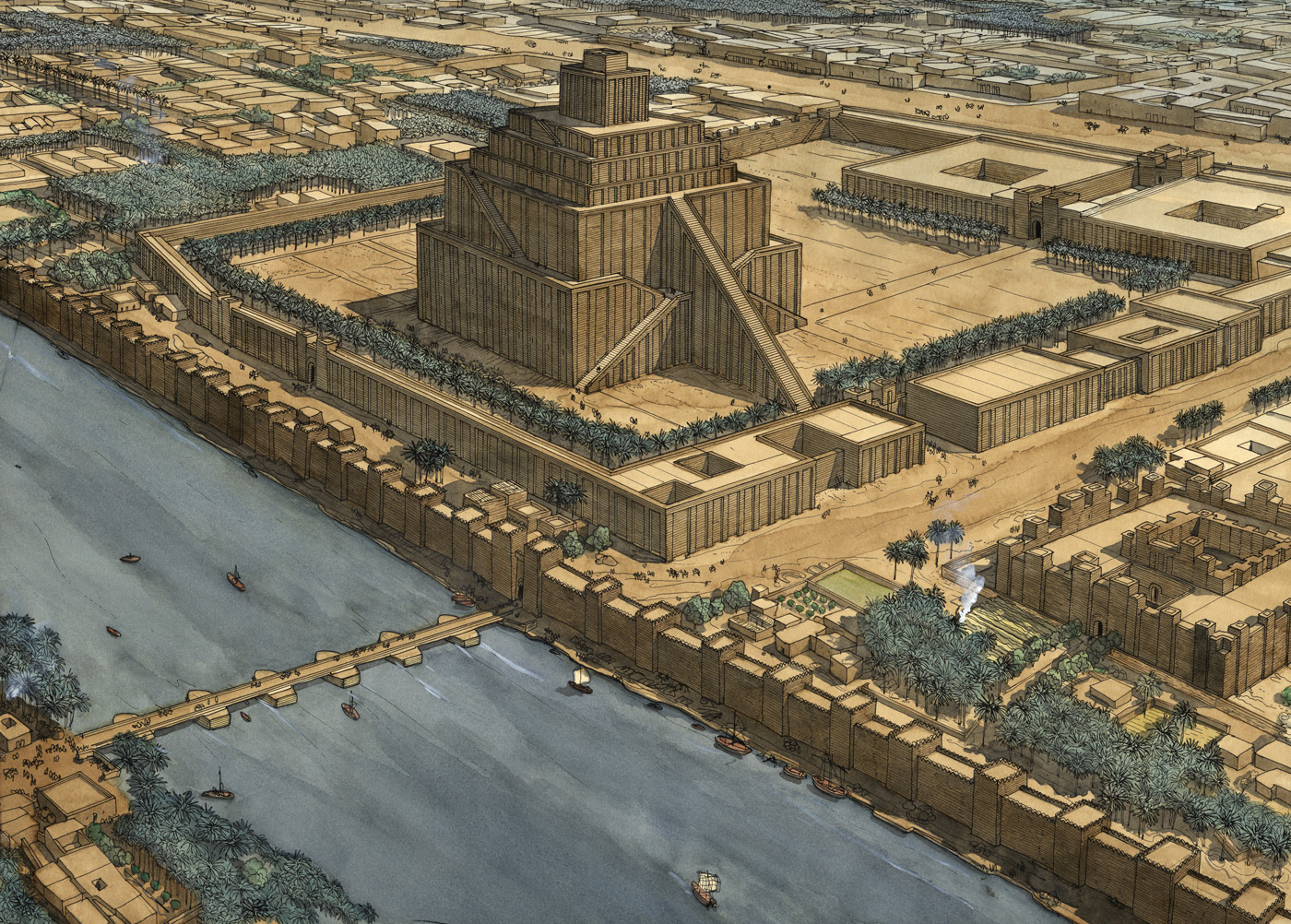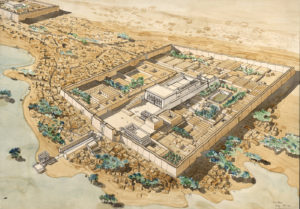Jean-Claude Golvin is a French architect and archaeologist and former researcher of the French institution CNRS (Centre National de la Recherche Scientifique). He is THE specialist concerning archaeological reconstructions, of which he created over 1000 up until now and which are featured in numerous publications, exhibititions and lately computer games.
Born in 1942, Jean-Claude Golvin graduated as an architect in 1972, at which point, he started to participate in archaeological projects. He worked in Tunesia on the preservation of the Roman amphitheater of El-Jem. His dissertation on “The Roman amphitheater, a theorization of its form and functions” was finished in 1985. He lived in Egypt until 1989, where he moved back to France. Since then, he devoted himself to the reconstruction of ancient heritage through watercolour drawings.
Every archaeologist has at some point seen some of his reconstructions. They are drawn in a very specific style, so you can immediately spot a “Golvin”. For myself, he was one of my major influences while creating the reconstruction of Piramesses, although I have to admit, that I discovered his works quiet late, as I was more focused on the German school of reconstruction. He uses ink and watercolor to create his work, which is usually drawn on big paper canvases. Lately, he has a well organised and accessible website, where you can have a look at his works: http://jeanclaudegolvin.com.
A while ago, while playing Assassins Creed Origins, I recognized some of his reconstructions, that were included into this popular computer game. In the Discovery Mode, a mode consisting of guided tours instead of the main story of the game, you’ll get a glance on the background of the game. They explain quiet a lot and also why the team decided to reconstruct in certain ways. As template illustrations, you’ll often see a “Golvin” and if you compare the computer visualisation inside the game with his drawings, the influence becomes very visible.



